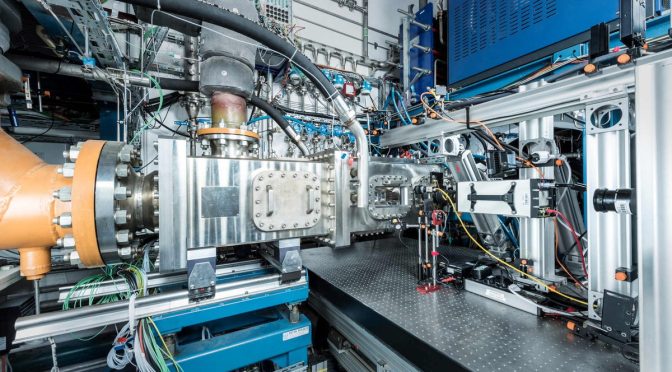
An extensive, four-year research effort by DLR and GE, supported by European and national technology projects, paved the way for the current test campaign by developing low-emission combustion technologies and advanced optical measurement techniques. The tests were conducted at the DLR Institute of Propulsion Technology in Cologne and are part of the conversion of a GE Passport engine to operate using hydrogen. The engine will be integrated into Airbus ZEROe flight demonstrator. in the future. Airbus aims to develop the world’s first hydrogen-powered commercial aircraft by 2035 and is initiating a multi-year demonstrator programme for this purpose.
The low-emission and safe combustion of pure hydrogen in aircraft engines is still a major challenge today because the combustion behaviour is significantly different from that of conventional aviation fuels such as kerosene. The infrastructure at the DLR Institute of Propulsion Technology allows researchers to conduct hydrogen combustion experiments in a realistic environment. The combination of experimental research facilities and expertise in the field of combustion in high-pressure combustion chambers, with the simultaneous availability of the latest laser-optical measurement methods at one institute, is globally unique.
Optical measurements
While hydrogen tests have already been carried out under atmospheric conditions in the past, DLR and General Electric Aerospace are researching beyond previously defined technological standards with high-pressure tests. At the beginning of the joint project, there was great curiosity as to how the flame would behave under the various operating conditions and whether the windows of the test stand would withstand the extreme thermal loads – both essential requirements for collecting meaningful data.
“In very good cooperation and friendly collaboration, a new measurement system has been developed especially for this project,” says Bertram Janus, Acting Director of the Institute of Propulsion Technology and Head of the Combustor Department. “Realistic operating conditions are of vital importance, especially for hydrogen combustion in aircraft gas turbines, due to the particular characteristics of the fuel. For the first time, we are investigating this challenging fuel under realistic conditions. The optical access gives us the opportunity to acquire data in a unique way.” Large quartz windows provide very special insights into the combustion chamber and allow the characterisation of the combustion behaviour and the reacting flow within the chamber with the help of the laser-optical measurement methods developed at the Institute.
The Institute of Propulsion Technology draws on decades of experience in the use of complex laser-optical measurement methods in aircraft gas turbines to enable rapid adaptation to new measurement objectives. “In the experiments, we use a range of measurement techniques that, when combined, complete the overall picture of the combustion process and also enable the validation of numerical simulations,” explains Christian Willert, Head of the Engine Measurement Systems Department at the DLR Institute of Propulsion Technology. “The optical measurements make it possible to instantaneously detect the reaction and heat release zones without affecting the combustion chamber flow. These are supplemented by flow field measurements to track the movement of the air-hydrogen mixture and the reaction products through the combustion chamber,” Willert continues.
“With the help of the measurements, which ran completely smoothly, it is possible to assess whether the burner meets expectations or whether adjustments or changes need to be made to the development and design tools,” says Thomas Ripplinger, Team Leader for Thermal and Combustion Systems at GE Aerospace Advanced Technology, summarising the importance of the test results for the project.
In the future, DLR and GE Aerospace are planning further tests with the high-pressure test rig (Hochdruck-Brennkammer-Pruefstand; HBK 1) and subsequently under even more application-oriented conditions at HBK 2 at the DLR site in Cologne.
Project details HYDEA 2023-2026
The tests are part of the EU HYdrogen DEmonstrator for Aviation (HYDEA) project. The main goal of HYDEA is to develop a novel propulsion system without carbon-dioxide emissions, based on the direct combustion of hydrogen, by 2026. At the end of the project, the feasibility of hydrogen propulsion in an aircraft engine will be completely demonstrated up to ground testing. The HYDEA results will be one of the major steps amongst the ZEROe technologies research launched by Airbus in 2020.